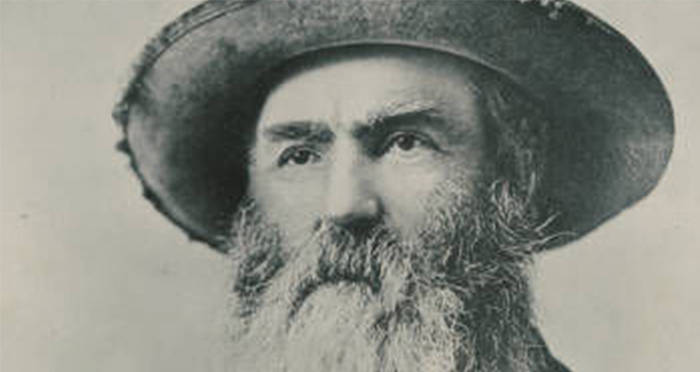Jeremiah “Liver-eater” Johnston, was born John Jeremiah Garrison in New Jersey in July of 1824. He was a giant of a man, standing six-foot-two inches, and weighing 260 pounds. Known as a mountain man and fur trapper, he also worked as a farmer, teamster, guide, and scout. Johnston also served on a whaling ship and was a private in the Union Army during the Civil War.
During the Mexican-American War, Johnston served aboard a naval ship. After striking an officer, he deserted, changed his last name from “Garrison” to “Johnston,” and headed to Colorado. There, he partnered with a mountain man named John Hatcher who taught him everything he needed to know to survive in the mountains.
The 1972 film, “Jeremiah Johnson,” starring Robert Redford and directed by Sydney Pollack, was loosely based on Johnston’s life and is responsible for perpetuating one of the biggest legends surrounding Johnston – how he got his nickname, “Liver-eater.” In the movie, “Johnson’s” wife and unborn son are killed by the Crow Indians. Johnson then goes on a life-long vendetta against the Crow, killing over three-hundred braves and eating their livers. The Crow believed that the livers were essential in order to enter the afterlife. This account is also perpetuated by the 1958 book “CROW KILLER” by Raymond Thorp and Robert Bunker, upon which the movie, Jeremiah Johnson, was based.

Photo credit – Michael R. Ritt
An alternate (and I believe more likely) account of how he got his nickname says that in 1868, Johnston, along with fifteen other men, was working as a woodhawk – someone who cuts wood to provide for the steamboats traveling up and down the Missouri River. While cutting wood along the Musselshell River near present-day Billings, Montana, the men were attacked by a group of Sioux Indians. In the fight, Johnston stabbed an Indian in the side. As he pulled out his knife, a small piece of the Indian’s liver was attached to it. As a joke, Johnston pretended to take a bite, and asked one of his companions if he “wanted a chaw.”
In the book, “Red Lodge, Saga of a Western Area,” by Shirley Zupan and Harry J. Owens, the authors quote Johnston as saying, “I was all over blood and I had the liver on my knife, but I didn’t eat none of it.” Johnston further declares, “The liver coming out was unintentional on my part.”
Johnston died January 21, 1900, in Santa Monica, California at the age of seventy-five. He was buried in a veteran’s cemetery in Los Angeles; however, on June 8, 1974, after a six-month campaign led by 25 seventh-grade students and their teacher, Johnston’s remains were relocated to Cody, Wyoming. In the ceremony that accompanied his burial in Cody, one of his pallbearers was nonother than Robert Redford.






